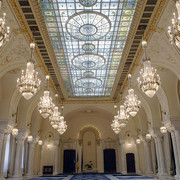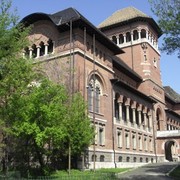Rose centifolia, jasmine, tuberose, lavender, geranium, juniper, orange blossom etc; perfumes are born from plants, here or elsewhere. In the unique setting of the International Perfume Museum’s Gardens, visitors can discover and smell the species that have provided valuable raw materials for perfumery for centuries.
Beautifully located in the heart of the fields of fragrant plants traditionally grown in the Grasse region, the International Perfume Museum’s Gardens are part of the regional project lead by the urban community Pôle Azur Provence and have become the perfume museum's plant conservatory, a reference natural area within the local agriculture’s olfactory landscape.
Articulated around an old channel and an agricultural basin, the site covers 2 hectares. In these gardens, fields of crops of species traditionally grown for perfumes lie alongside landscaped areas comprising various collections of fragrant or aromatic plants. Their primary purpose is to contribute to the conservation of the varietal diversity of species traditionally cultivated for perfumery. They also reflect the local agriculture’s olfactory landscape.
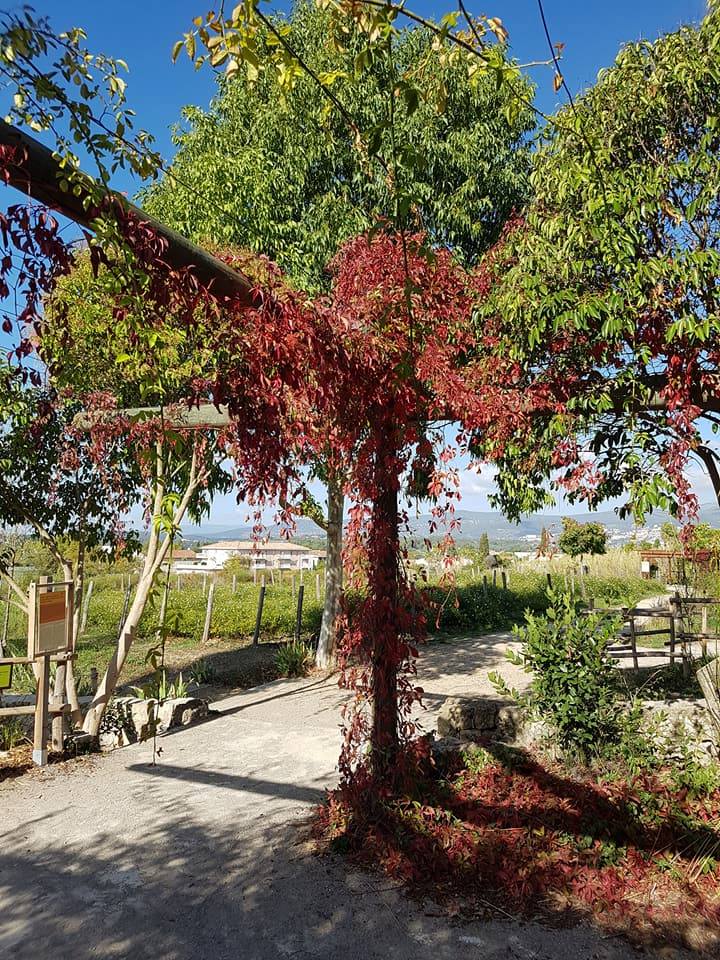
[Credit Facebook site]
"An interactive and multi-sensory route"
Go for a stroll through the gardens and discover plants sequenced according to their olfactory notes: citrus, floral, woody, spicy, fruity, musky etc. Video guides are available to assist you in your discovery. You will be able to see photos, videos, listen to testimonies from farmers, harvesters and brokers.
The permanent exhibition of the gardens complements the site visit with a scientific approach combining objects and visual displays. You will discover why plants produce a scent. There is also talk of ecosystem and insects, smells and history etc.
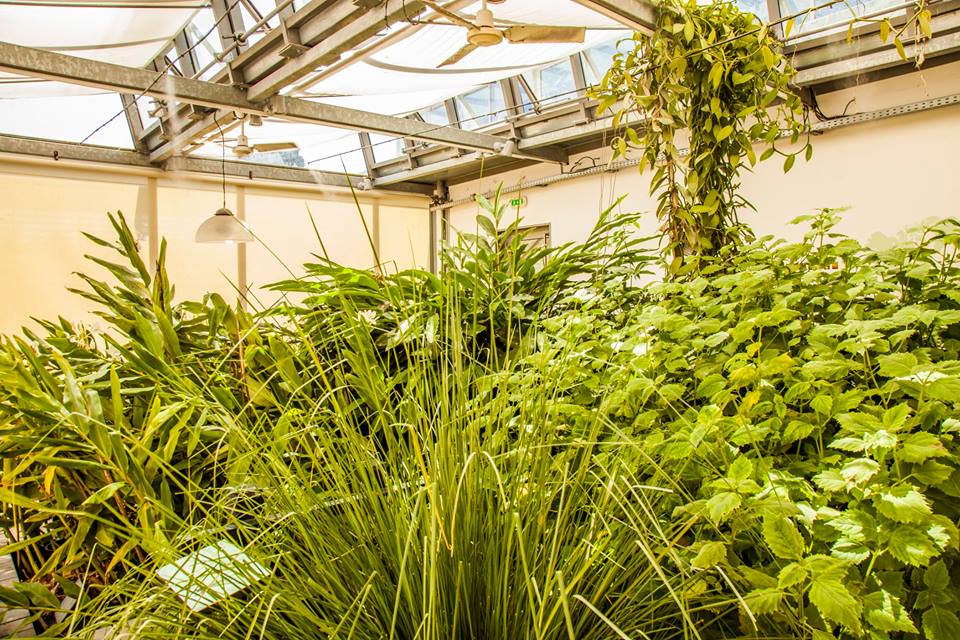
[Credit Facebook site]
History of the International Perfume Museum Gardens
The idea of creating a conservatory for the botanical and floral heritage of the perfume industry in Grasse came about long ago.
Utility gardens, flower gardens, botanical collections that were in vogue in the nineteenth century, and scientific or test gardens like the one created by the manufacturers of the Grasse perfumery in 1920, contributed to the development of the culture of perfume.

[Credit Facebook site]
Created in 2003, they form part of a regional project led by the urban community Pôle Azur Provence. In 2007, the project "La Bastide du Parfumeur" was born, attracting substantial private funding, advice from specialists (architects, gardeners, botanists, perfumers), as well as the support of the municipality of Mouans-Sartoux and the urban community Pôle Azur Provence. The "Bastide du Parfumeur" was created in order to educate the wider public about the growing of perfumery plants in the Grasse region. This project focused exclusively on the various issues related to local agriculture and played an essential role in sustainable development and heritage.
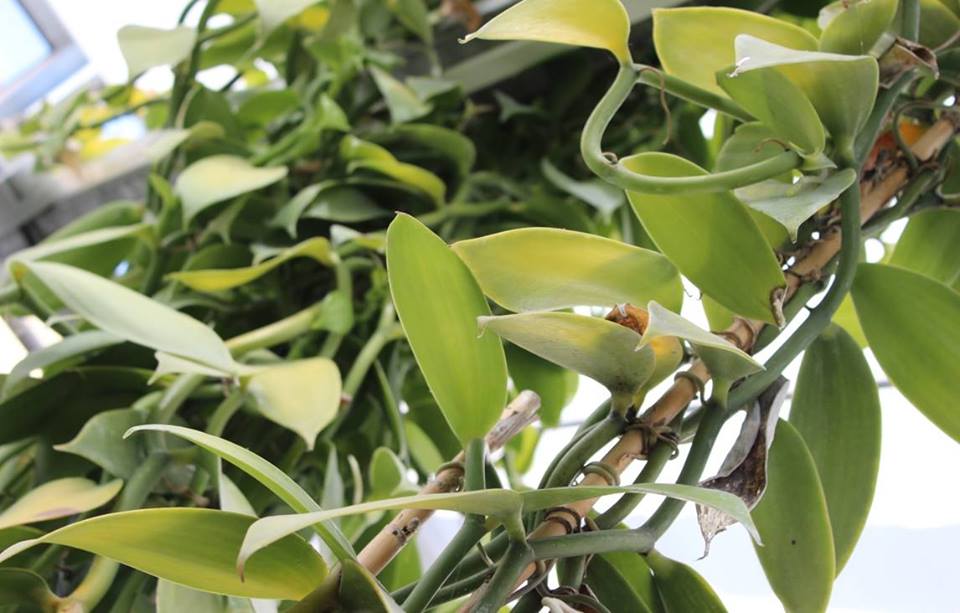
[Credit Facebook site]
Since 1st January 2010, the gardens have become the international perfume museum's plant conservatory: a natural reference area within local agriculture’s olfactory landscape. It presents the public with perfume plants, aromatic plants and any plant of interest in terms of the history of Mediterranean cultures and perfumery. Besides the desire to be an open-air botanical conservatory, the gardens are intended to be a fun organic gardening educational tool. Compost, green mulches and other techniques are used to give the plants the elements needed their development, while respecting the ground and optimising water intake.
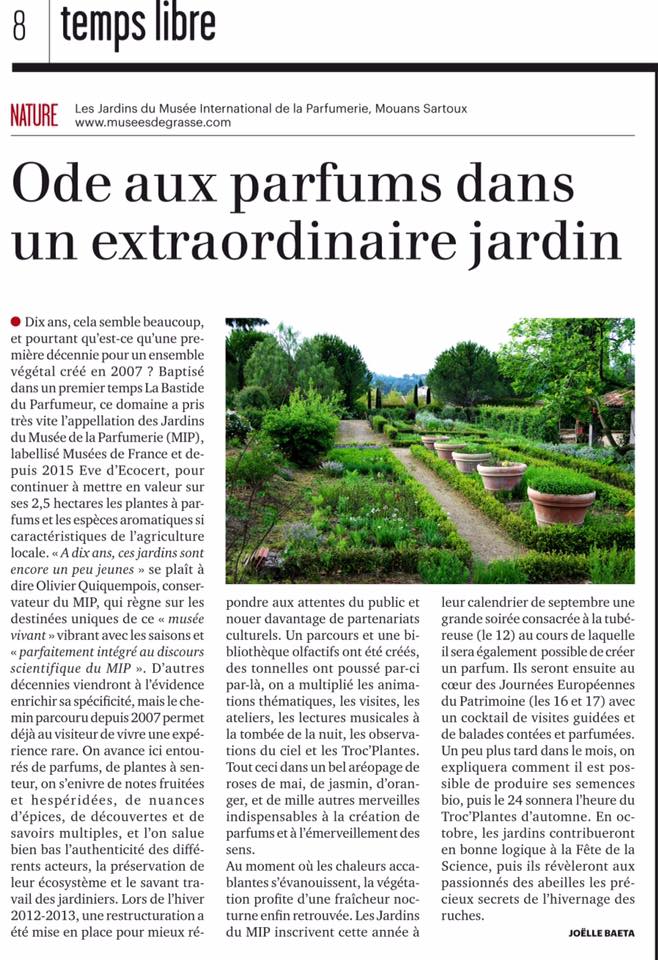
[Credit Facebook site]
The gardens today
With a total area of about 3 hectares, the gardens are organised into two sections separated by a dry valley running between two stone walls: the olfactory route to the east, gardens allowing visitors to discover scents associated with olfactory notes; the field route to the west, partly planted with trees traditionally grown in Grasse aiming to preserve these now rare landscapes. Both routes provide an opportunity to discover the flora and fauna preserved in all their richness.
The public reception is organised around a large greenhouse, a multifunctional technical and educational space, forming a true threshold for the gardens.
MIP-MAHP-JMIP:
VILLA: Closed to the public from October 1, 2017.
GUIDED TOURS
MIP: During spring break (from April 7 to May 5), guided tours are from Monday to Saturday at 11:00 a.m. and 3:00 p.m, except (Monday of April 30 and tuesday of May 1) reservationless. Rate: €2/adult + entrance fee. Length: 90 minutes.
JMIP: Saturdays and Sundays at 3:00 pm. Rate: free + entrance fee. Length: 90 minutes.

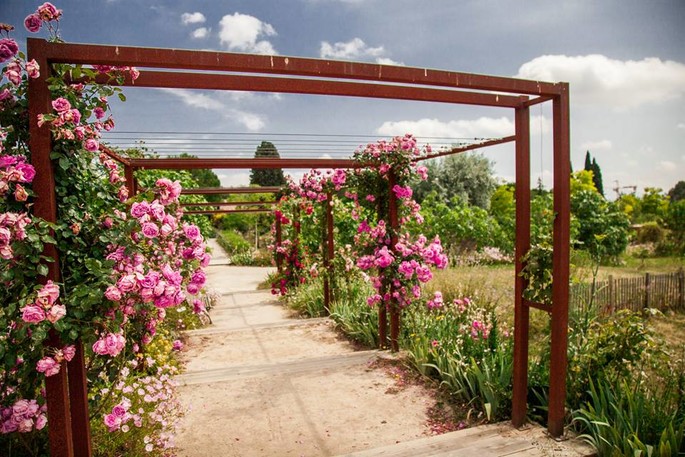






























![Hanbury Gardens, itineraries for everyone all year round [Videos] Hanbury Gardens, itineraries for everyone all year round [Videos]](https://www.italyrivieralps.com/typo3temp/pics/g_a7708c6a79.jpg)


